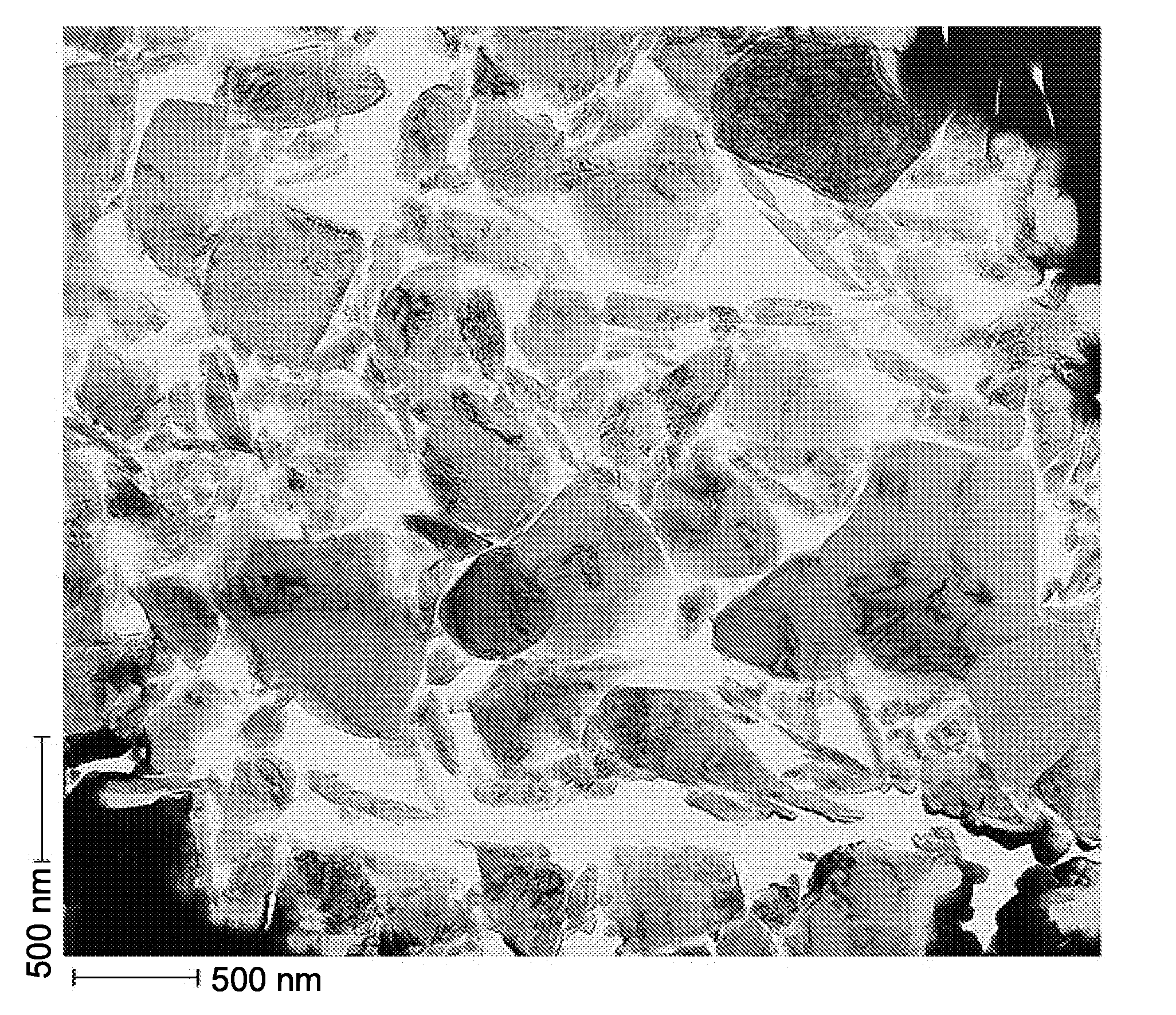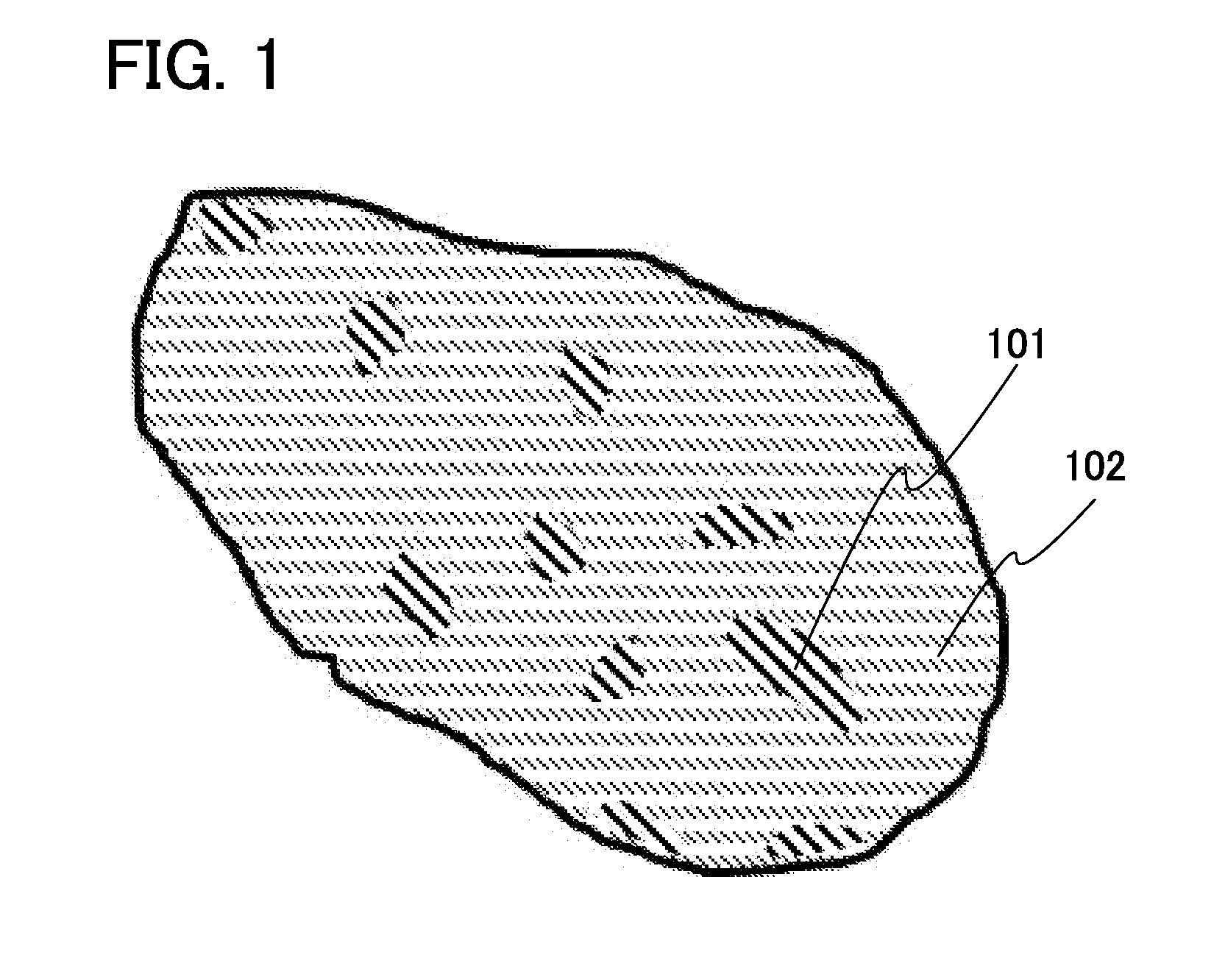Lithium manganese oxide composite, secondary battery, and manufacturing method thereof
a technology of lithium manganese oxide and composite materials, which is applied in the direction of manganates/permanentates, non-metal conductors, cell components, etc., can solve the problems of high cost, cobalt, a raw material of licoosub>2/sub>, etc., and achieve high capacity, high structural stability, and cost reduction
- Summary
- Abstract
- Description
- Claims
- Application Information
AI Technical Summary
Benefits of technology
Problems solved by technology
Method used
Image
Examples
embodiment 1
[0039]A method for forming a novel material will be described below in detail.
[0040]First, starting materials lithium carbonate (Li2CO3), manganese carbonate (MnCO3), and nickel oxide (NiO) are weighed.
[0041]In this embodiment, the ratio of raw materials is adjusted according to the idea of changing the ratio. The ratio is changed to form a lithium manganese oxide composite having a spinel crystal structure in part of the surface of each particle with a layered rock-salt crystal structure.
[0042]In the case where Li2CO3, MnCO3, and NiO are used at a ratio of 1:0.7:0.3 (=Li2CO3:MnCO3:NiO), Li2Mn0.7Ni0.3O3 is obtained. Thus, it is important to change this ratio.
[0043]In this embodiment, Li2CO3, MnCO3, and NiO are weighed such that the ratio thereof is 0.84:0.8062:0.318 (=Li2CO3:MnCO3:NiO). Note that the ratio is represented as a molar ratio. Acetone is added to the powder of these materials, and then, they are mixed in a ball mill to prepare mixed powder.
[0044]After that, heating is pe...
embodiment 2
[0059]In this embodiment, a novel material is obtained by a forming method different from that in Embodiment 1.
[0060]First, starting materials lithium carbonate (Li2CO3) and manganese carbonate (MnCO3) are weighed.
[0061]In this embodiment, firing temperature is adjusted to synthesize a novel material.
[0062]In this embodiment, Li2CO3 and MnCO3 are weighed such that the ratio thereof is 1:1 (=Li2CO3:MnCO3). Acetone is added to the powder of these materials, and then, they are mixed in a ball mill to prepare mixed powder. After that, heating is performed to volatilize acetone, so that a mixed material is obtained.
[0063]Then, the mixed material is put into a melting pot, and is fired at a temperature higher than 380° C. and lower than 950° C., preferably at approximately 500° C., in the air for 5 to 20 hours inclusive.
[0064]Subsequently, grinding is performed to separate the sintered particles. For the grinding, acetone is added and then mixing is performed in a ball mill.
[0065]After th...
embodiment 3
[0073]A method for forming a novel material will be described below in detail.
[0074]First, starting materials Li2CO3 and MnCO3 are weighed.
[0075]In this embodiment, the ratio of materials is adjusted according to the idea of changing the ratio of materials. The ratio of materials is changed to form a lithium manganese oxide composite having a spinel crystal structure in part of the surface of each particle with a layered rock-salt crystal structure.
[0076]Table 1 shows the target percentage of part with a spinel crystal structure in each of materials formed in this embodiment (samples A to D and comparative examples 1 to 5), the target percentage of part with a layered rock-salt crystal structure in each of the materials, and the ratios of materials. Note that forming methods of samples A to D and comparative examples 1 to 5 are substantially the same except for the ratio of materials.
TABLE 1Percentage (%)Li2MnO3spi-LiMn2O4Feed ratio of materialscomperative1000Li2CO3:MnCO3 = 1:1examp...
PUM
 Login to View More
Login to View More Abstract
Description
Claims
Application Information
 Login to View More
Login to View More - R&D
- Intellectual Property
- Life Sciences
- Materials
- Tech Scout
- Unparalleled Data Quality
- Higher Quality Content
- 60% Fewer Hallucinations
Browse by: Latest US Patents, China's latest patents, Technical Efficacy Thesaurus, Application Domain, Technology Topic, Popular Technical Reports.
© 2025 PatSnap. All rights reserved.Legal|Privacy policy|Modern Slavery Act Transparency Statement|Sitemap|About US| Contact US: help@patsnap.com



